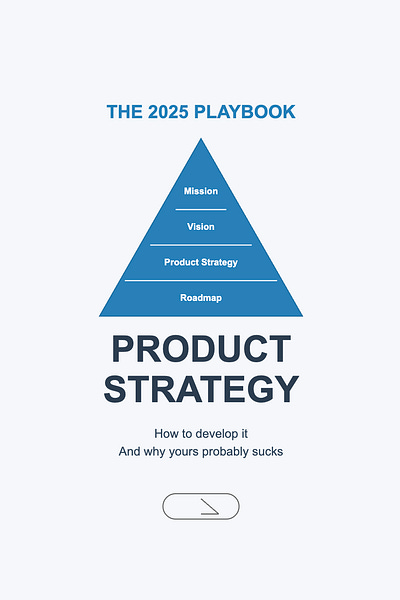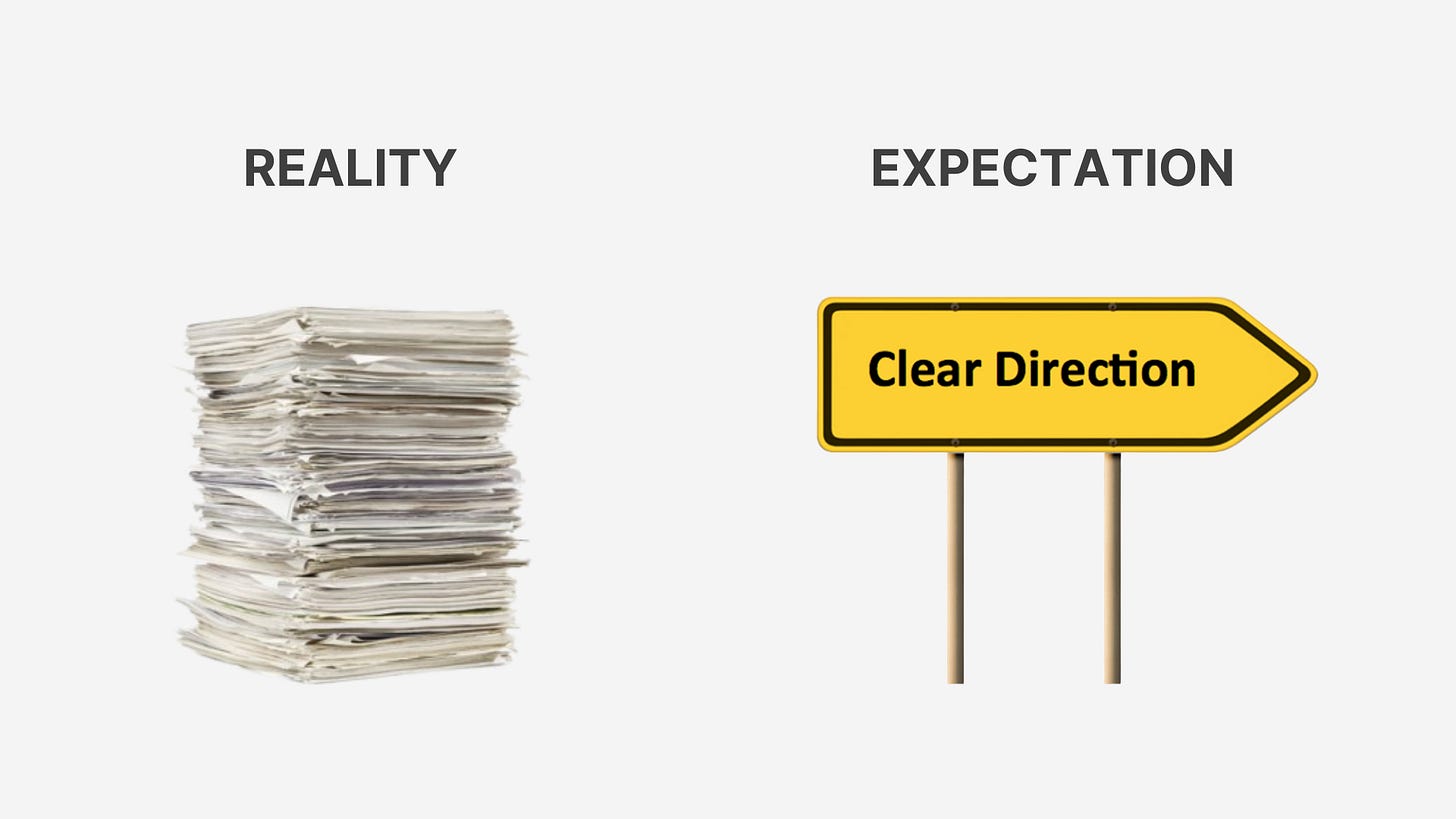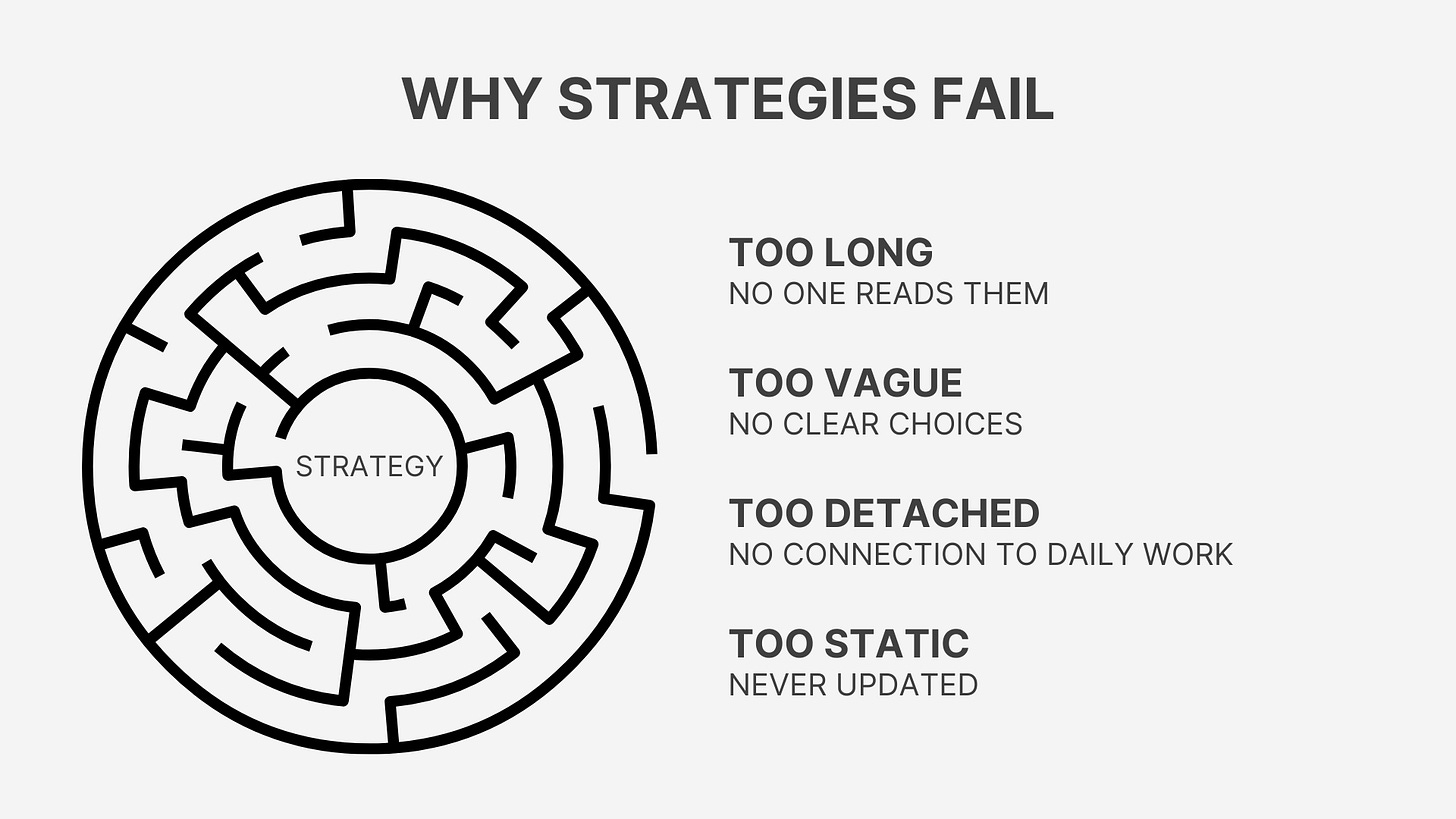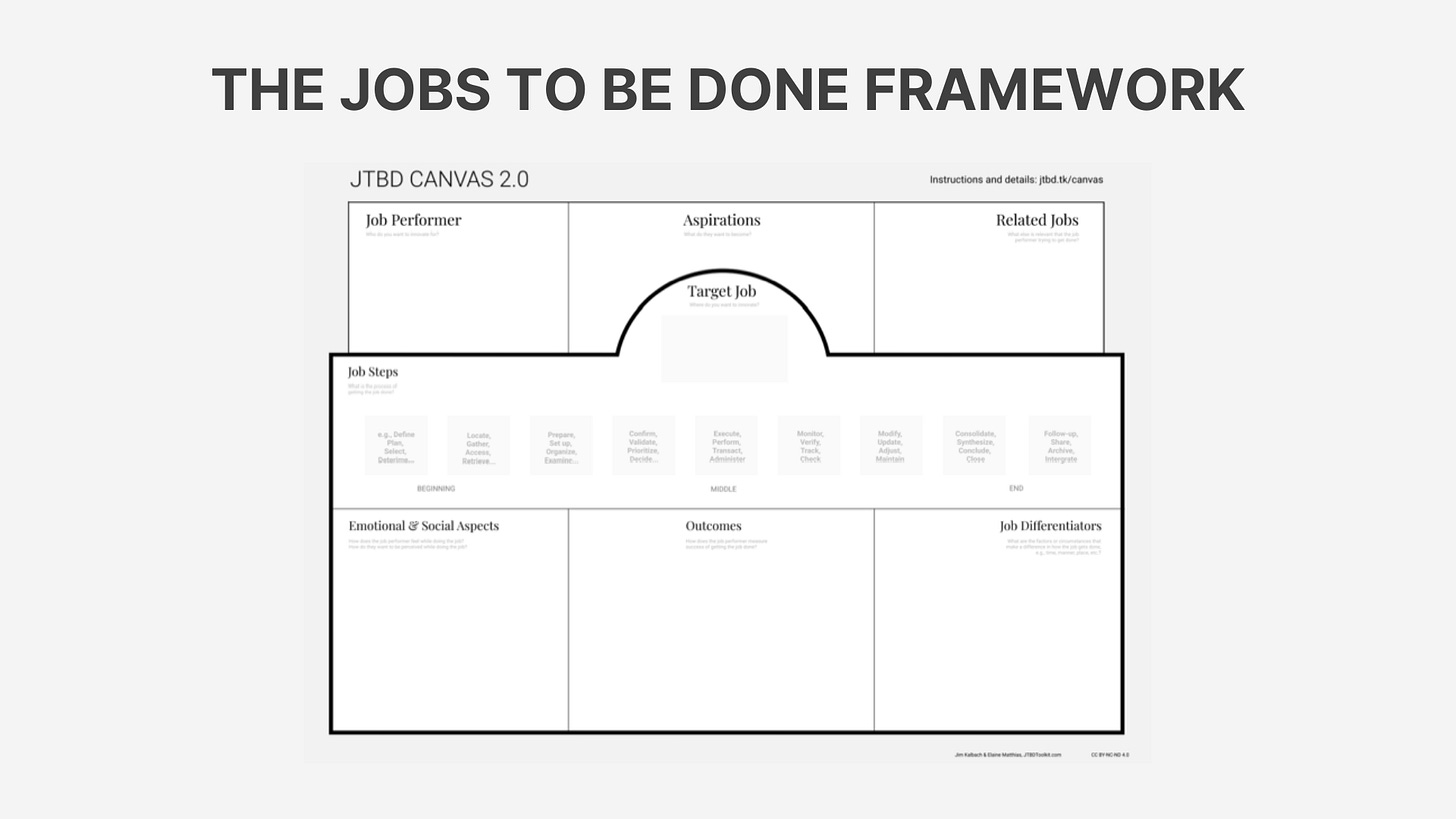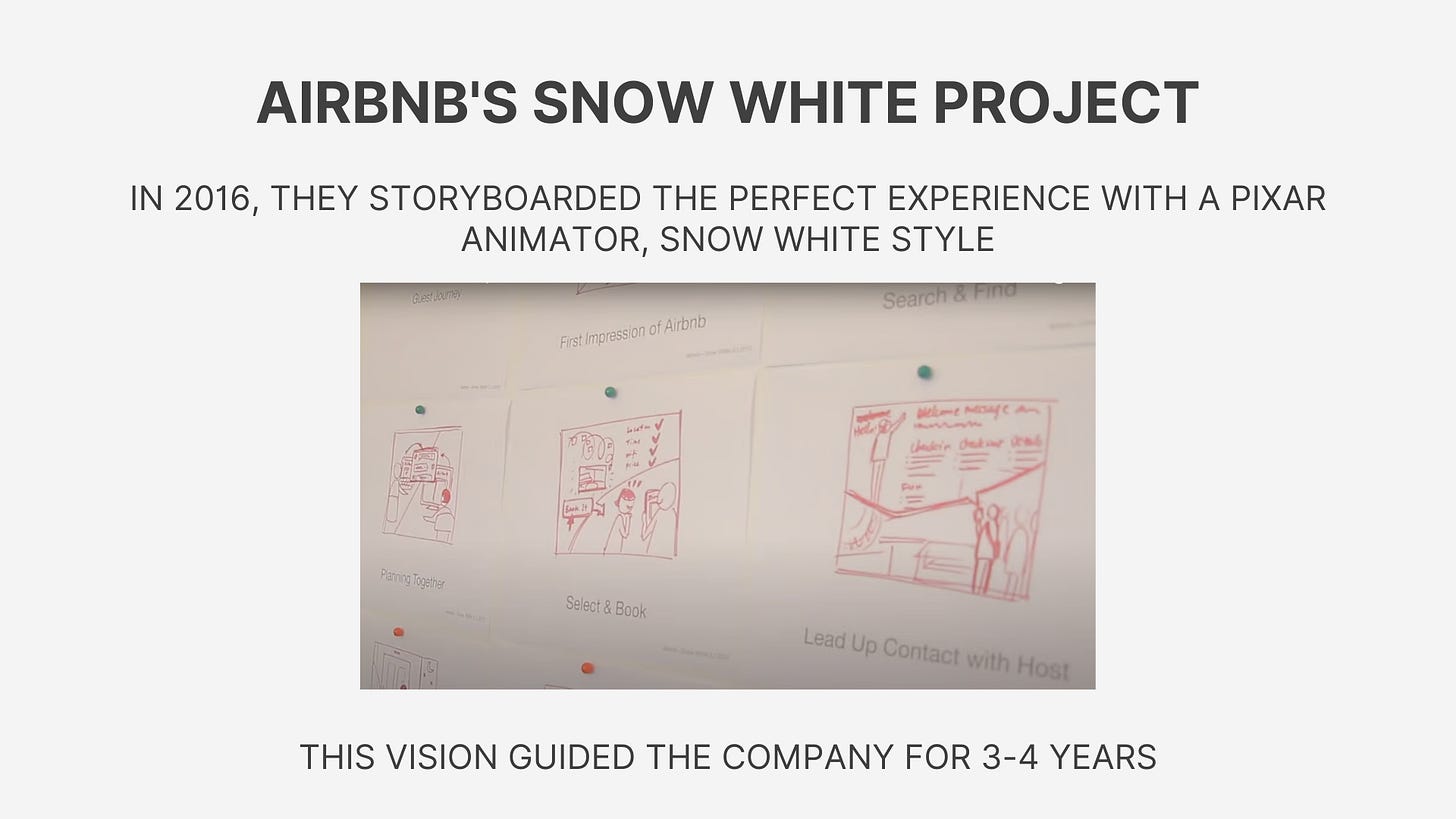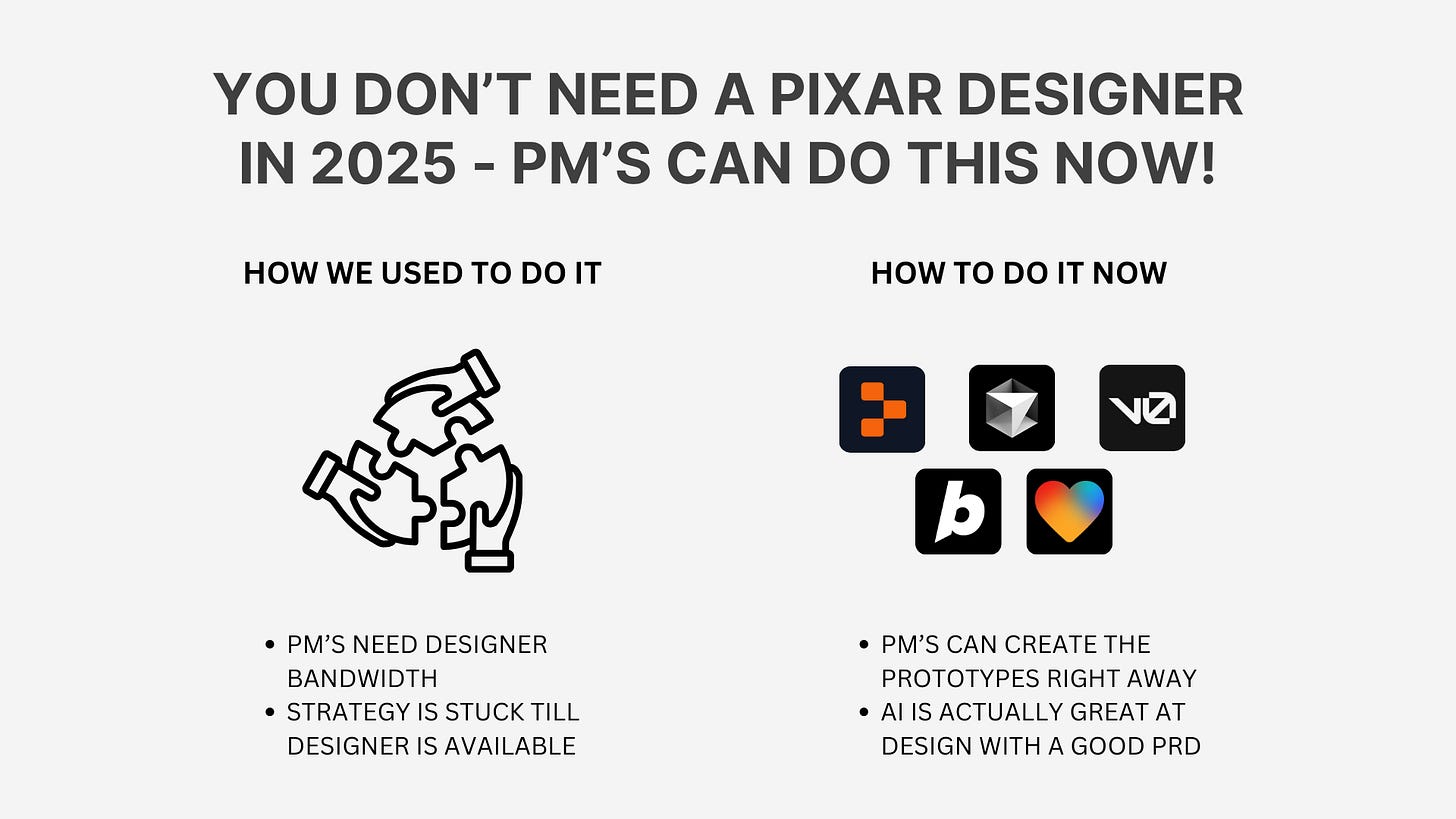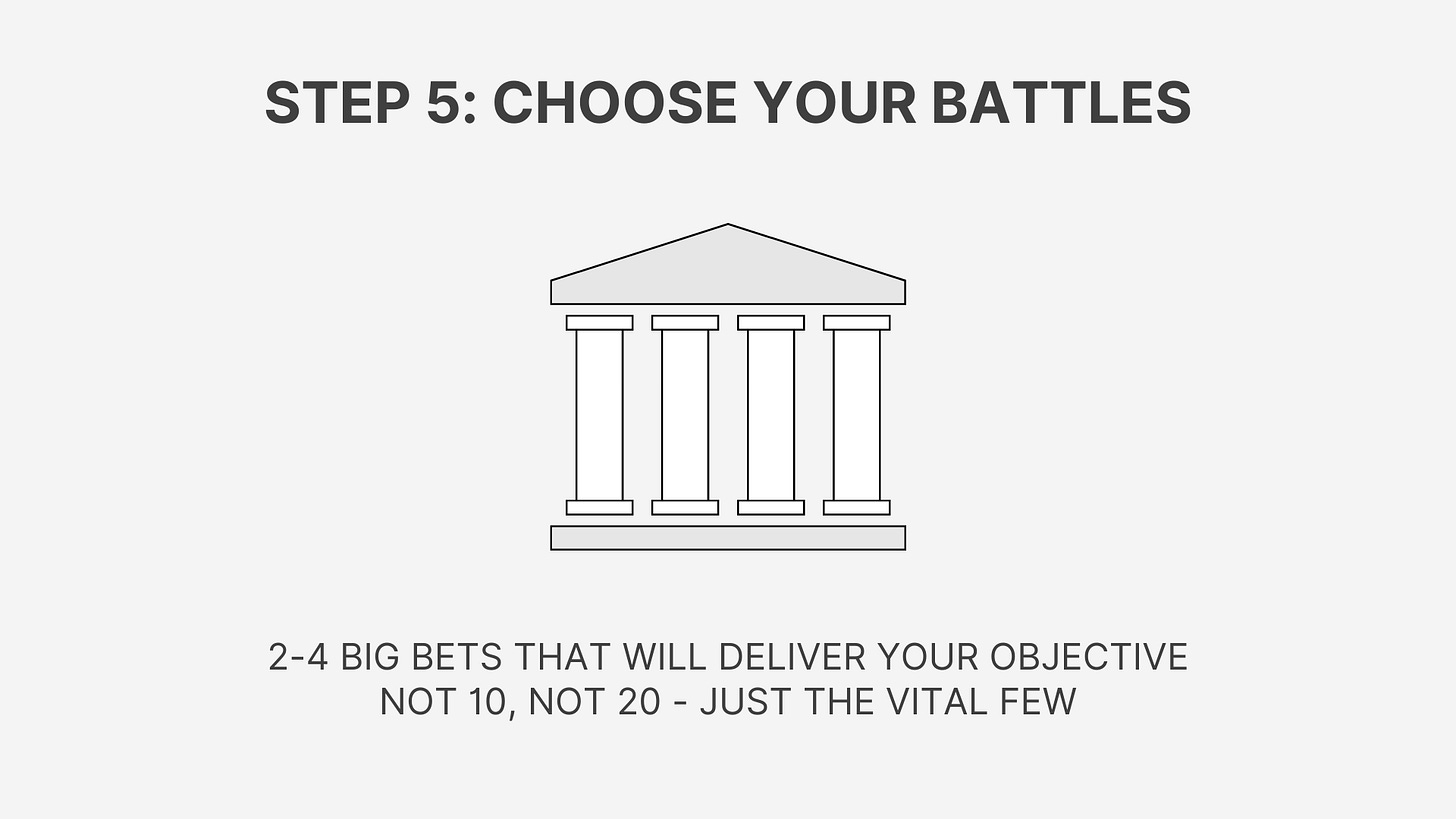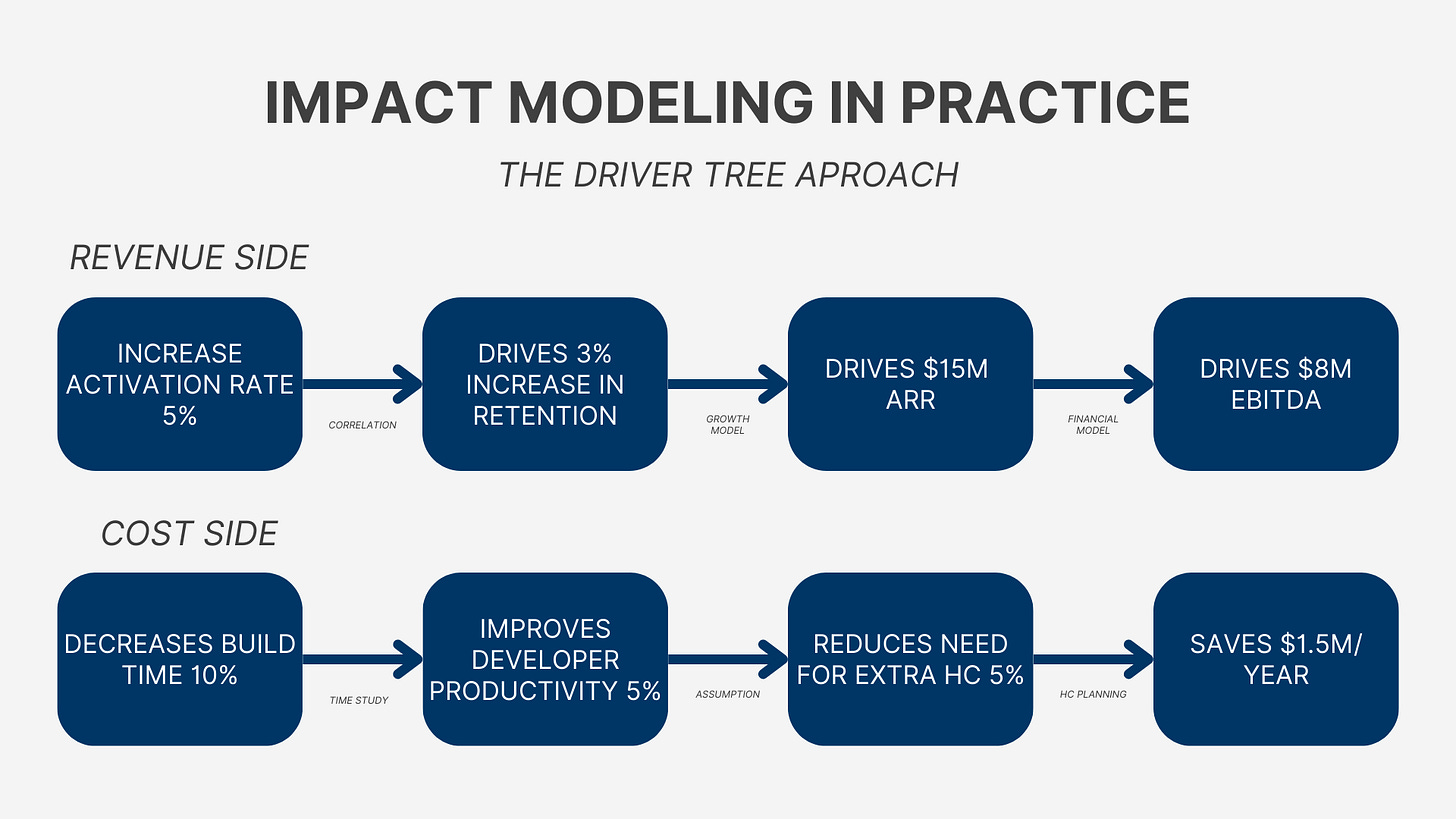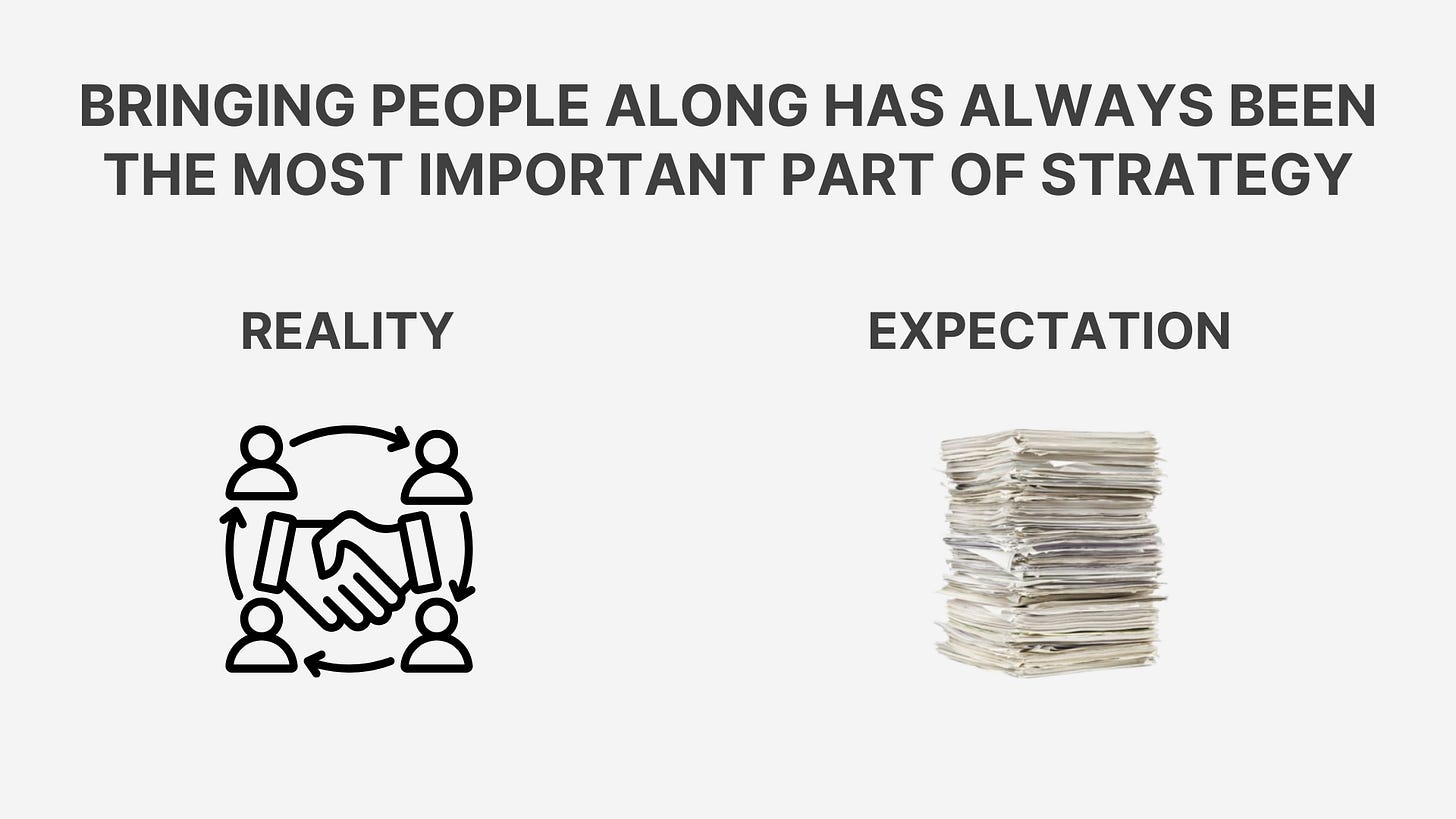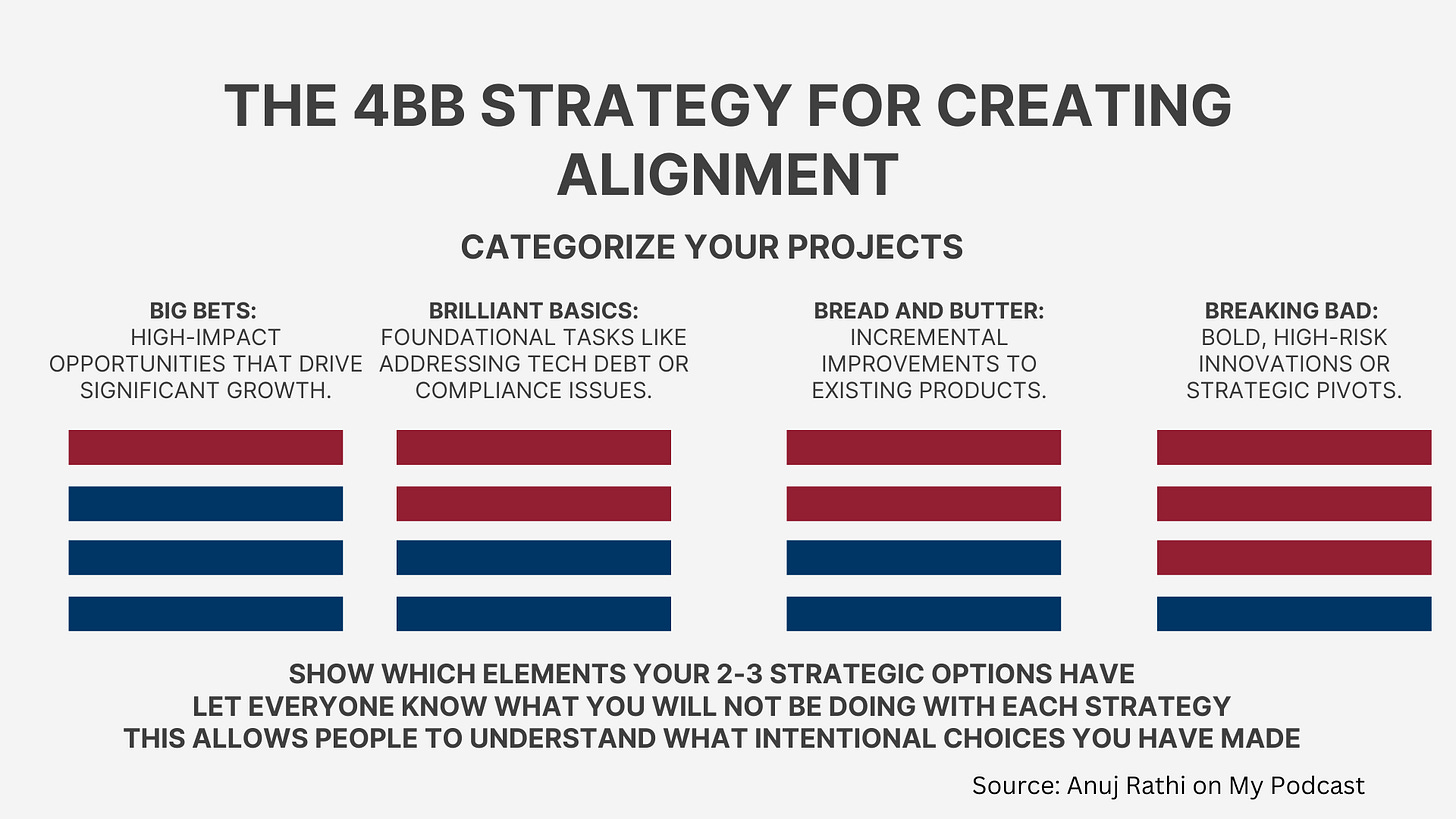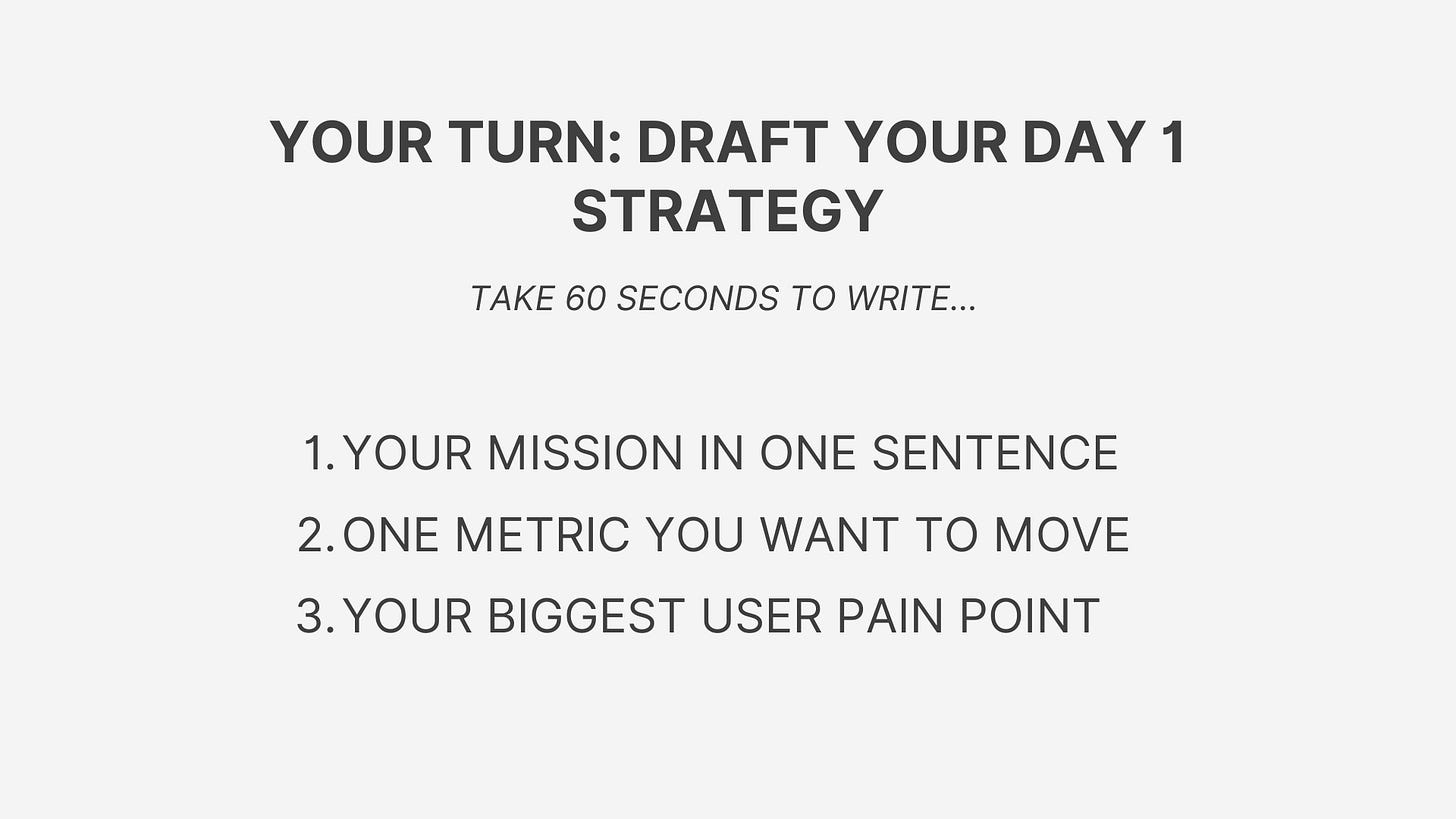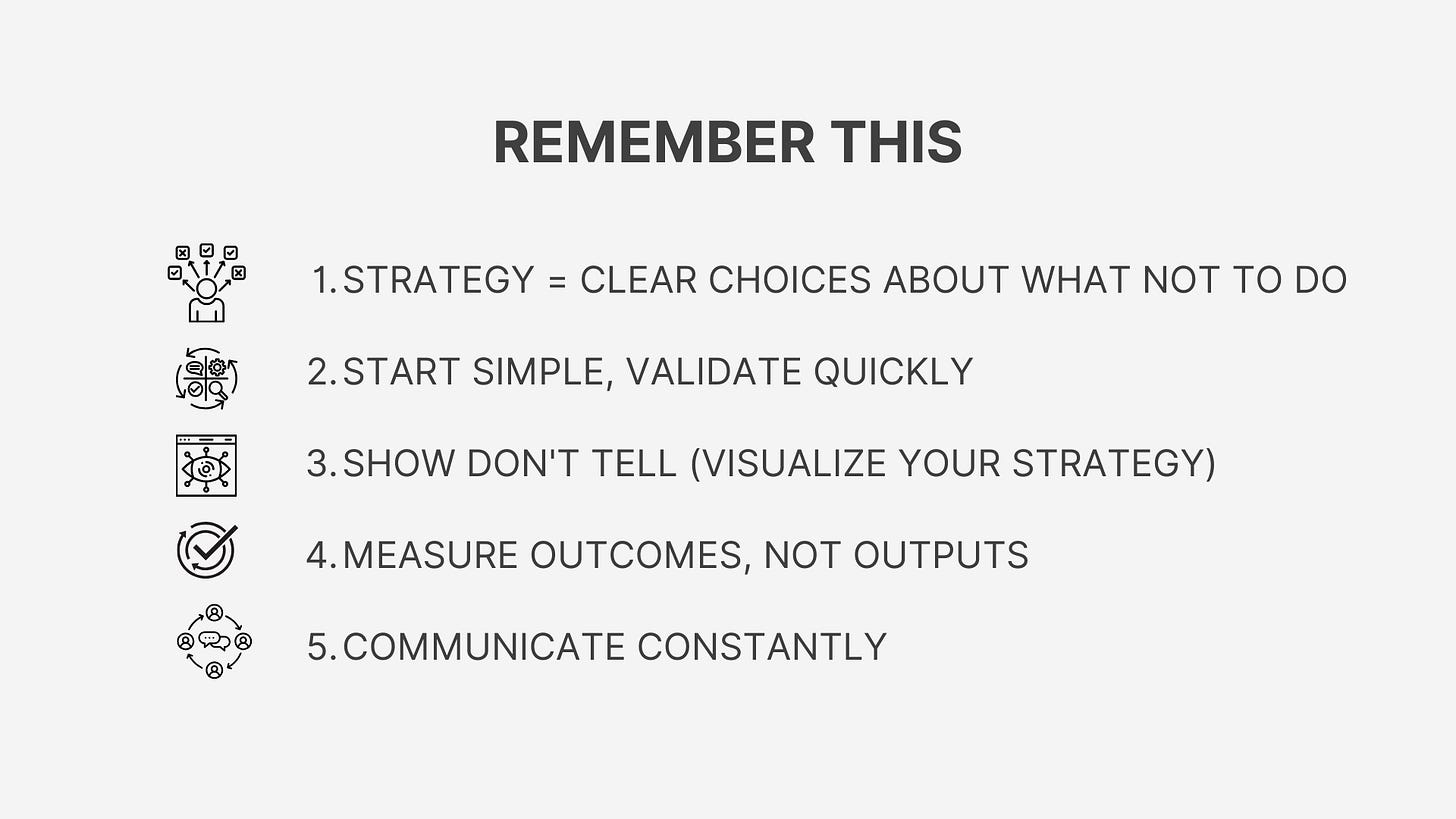The 2025 Product Strategy Playbook
Product strategy has changed - and if you're using an outdated playbook, you'll be missing out. Here's how to build your product strategy in the AI age
I gave the keynote at Northeastern’s Product Management conference today:
I’m sharing the talk track and slides here for all of you subscribers. Thanks for subscribing!
Today’s post is entirely free thanks to Merge.dev
Want to know the secret behind Linear's exceptional product? Join us on March 25th at 3 PM ET for an exclusive conversation between Anuj Jhunjhunwala (Merge's Head of Product) and Nan Yu (Linear's Head of Product) as they dive into:
Making strategic product decisions that users love
Building processes that scale as your company and user based grows
Maintaining quality while moving fast
Here’s the PDF if you prefer that reading format (you won’t get the videos):
Now, let’s begin…
It’s a harsh truth. But most of the product strategies out there are worth less than the paper they’re printed on.
But we’re facing a new reality with respect to the role PMs can play in the product development process.
Modern AI prototyping tools like Replit, Cursor, v0, Bolt, and Lovable are enabling PMs to not just design but code fully functioning prototypes with simple text prompts.
That’s not the only way AI is changing strategy. AI is also doing three things:
It’s making designers and engineers more efficient -
Each individual builder has more leverage than ever - which means they need better strategic direction on what to build
And it also means those strategies need to adapt and be malleable - they can’t be rigid feature lists in this age, they need to be high level problem and outcome direction
Having empowered teams that are going in the right direction matters more than ever - and PMs need to plug that gap with great strategy built for this era
PMs are able to get closer and closer to the product -
PMs can iterate on product copy with AI to improve the copy
PMs can build AI prototypes for new features that are even the first version into production
PMs can build AI evals that determine the future of the product
AI still can’t develop a great strategy -
AI lacks the context of a PM - what worked before, all the 1000s of documents and customer calls can’t fit in its context window
AI can’t do the rounds and rounds of iterations with stakeholders and customers that a truly hardened and well-accepted strategy can
This makes product strategy more important than ever as a task for PMs and product leaders.
A few other things have happened that make 2025 a unique time for strategy—a time where, if you use the outdated advice, you’re likely for failure.
Static ➜ Continuous iteration: you’re not going to just set and forget a strategy for 2-5 years, things like new AI tools are going to disrupt you way faster than that
Documentation-driven ➜ Visualization first: the era of the long document is over, now people expect visuals like videos and prototypes
Annual cycles ➜ Data informed: as teams learn new things from incremental releases, they need to be able to adapt to the new data
Given how much things have changed in the past few years, I thought I needed to write a complete guide to product strategy that actually works in this era.
The kicker? You’ll be able to write your first draft in less time than it takes to watch a movie.
So let’s get into it.
Let’s start with the base reality. I talk to a few PMs each and every single day. It’s my user discovery process. And I often ask:
“What does your product strategy look like?” ➜ Most people still say a document
“And what is the goal of that strategy?” ➜ Most people say clear direction
“And do you have clear direction?” ➜ Most people say no
The problem is, there’s just no content to break away from this reality! That’s why people keep using the same old frameworks they have been.
I call this “The Strategy Crisis.” And I really do think it’s a crisis. As PMs, product leaders, and product builders, we’re drowning in documents.
But, we’re still starving for direction.
This is a pretty big problem. Because product teams are expensive. Let’s do the math on a typical product team in the United States:
5 engineers x $200K = $1M
1 product designer x $180K = $180K
1 product manager x $190K = $190K
That’s a total cost of $1.37M to maintain the team
And this doesn’t even include the percentages of time of the leadership that are going to the team. So all in, it’s closer to $1.5M/year.
And if you have a bigger team? Like 10 engineers? The cost balloons to $2.5M.
So product teams are really expensive. You need to get a return on that investment.
That’s part of the job of the product manager, and the product strategy is perhaps the highest leverage thing to influence that ROI.
Unfortunately, most strategies fail for one or two of four very predictable reasons:
They’re too long - so no one reads them
They’re too vague - so there are no clear decisions being made
They’re too detached - there’s no connection to the daily work people do
They’re too static - they aren’t updated as the teams learn new things from shipping new things
The fact is: great strategies are simple. Today, I’ll help you build a great, simple strategy. I’ll show you how you can go from a stack of documents to visiontypes that resonate with people.
Now, some of you may be thinking: “this doesn’t apply to me!” I think it does. In fact, strategy is as important for PMs as leaders and founders in 2025.
A good way to think about this is Chandra Janakiraman’s Big S and little s strategy:
Big S Strategy is for larger company changes. It’s CEO or GM driven and about the 3-10 year visionary direction for the company
Little s strategy is for individual product teams working on execution planning. It’s PM driven and about the 1-2 year tactical direction for the team
So PMs still need to excel at the skill of little s strategy.
I’ve heard all the protests. The most common one is, “but I’m in a feature factory!” The idea is: “all my features are handed to me from executives. Strategy is a waste of my time when I’m measured on execution.”
Here’s the thing: the only way to influence executives and leaders who are handing you those features is to show them a better alternative. That’s the power of product strategy.
And in empowered environments, product strategy is already a very important of the job.
So, my contention? No matter what environment you’re in, it’s worth mastering product strategy as a PM.
So let’s break down how to build strategy. My favorite framework was published in this very newsletter and podcast by
.It has 7 steps:
Objective
Users
Superpowers
Vision
Pillars
Impact
Roadmap
It works for both Big S Strategy and little s strategy.
It’s presented linearly, but really it’s never done. Strategy is an iterative, continuous process.
And here’s the most brilliant part of it. You should do this strategy in three parts:
In 1 day: as a snap strategy, capturing the present state as you know it now
In 1 week: as you bring along others and test out different solutions, eg with a design sprint (more on that in a bit)
In 1 month: as you fully socialize the strategy with the broad array of stakeholders interested in it and find better evidence to support contentious points, eg with a strategy sprint (more on that too)
Here’s the crazy thing: very often, your 1 day strategy turns out to be 80% right. When all is said and done, you can do a whole lot with a snap strategy.
So, without further ado, let’s jump into our seven steps. Let’s start with step 1: set your objective.
The formula for a great objective is not that complex.
Objective = Mission + Measure
For instance, a good objective might be, “increase 30 day retention from 18% to 22% by Q3.”
Let me tell you a story. When I first joined the product leadership team at Affirm, we launched with 14 top priorities.
There were a few problems with this:
Teams started selecting the 3-4 priorities most close to them, and everyone ended up focused on different things
Making trade-off decisions, like where to put headcount, became very difficult because everyone was focused on different priorities
Growth actually slowed
So, then the product leadership team worked with Max Levchin, our CEO, on a dramatic simplification: we narrowed down to 3 clear objectives.
This was a see change:
Teams all had to shift their roadmaps to meet the key priorities
Leaders had an easier time re-allocating headcount to the key priorities
Growth re-accelerated
That’s the power of having a simple, focused set of objectives.
Now let’s move on to step 2: understand your users.
The goal here is to build a customer journey map that helps you understand not just who they are, and their demographics, but actually what progress they are trying to make.
One of my favorite ways to do this is the JTBD Canvas 2.0. This has several sections:
Who is the job performer
What are their aspirations
What are their related jobs
And then a core focus on their target job:
The job steps
The emotional and social aspects
The outcomes they want
And the job differentiators
A great example of understanding the user job to be done, and using that for product strategy, is Slack.
How did they ultimately become a staple of how people work?
They didn’t build “better email.” They understood the real job: team communication.
I love what Marty Cagan said on the podcast:
If you understand the customer’s needs deeply, the solution becomes obvious.
This bring us to step 3: identifying your superpowers, aka your “unfair advantage.”
These can be a range of things like network effects, scale economies, switching costs, brand…
The point is: Superman and Deapool don’t have the same advantages. So it wouldn’t make sense for them to fight the same.
The same is true for your product in the war for customer’s wallets.
The best framework I’ve seen to understand your unfair advantage is Hamilton Helmer’s 7 powers.
He defines 7 different types of powers:
Scale economies: Your unit costs decline as volume increases
Network economies: The value of your product increases as more users join
Counter-positioning: Your approach makes it difficult for incumbents to respond
Switching costs: Users face significant friction when changing to alternatives
Branding: Customers' preference for your product beyond its objective attributes
Cornered resource: Preferential access to a critical, scarce asset
Process power: Embedded company procedures that enable lower costs or superior products
Understanding your specific superpowers is crucial because it shapes how you should compete. Just as Superman and Deadpool leverage different abilities, your product strategy must align with your unique advantages.
A great example of this is Airbnb’s superpower. I’d argue they have three key one’s:
Network effects: more guests drive more hosts which drive more guests
Brand: it’s a verb now, much like Google for search
Counter-positioning: It’s playing against the dominant, “meh” player of hotels
They understood these and focused on these 3 - not all 7.
Let’s move into step 4: vision. This is where you show the future.
I love what Jeff Middlesworth has said about this:
There’s something about seeing the user experience that turns the light on.
It’s great to be able to give people a before and after picture. Because a picture is 1,000 words.
So, what type of visual should you create? There are 4 types I recommend you consider:
Storyboards
Prototypes
Videos
Mockups
I think a phenomenal story of this is what Airbnb did in 2016 (continuing our analysis of them). They actually hired a Pixar animator to storyboard out all the key moments that they wanted to deliver.
They then used those same storyboards for 3-4 years!
But you don’t need to hire a Pixar designer in 2025! You can do this all yourself with new prototyping tools.
You don’t need to rely on your designer, and wait for them to have a week to do a design sprint with you.
It’s good to get them involved. But if they’re busy, you can go out and do the designs and prototypes yourself!
Here’s an example: I wrote a quick PRD for a new interface for ChatGPT, and I put that into Bolt (the CEO is on the podcast in a week by the way).
In less than a minute, it generates a working prototype (this video is sped up 2x):
The skill has gone from doing the design to writing the PRD, making the PM thinking and the PM more important than ever.
So which prototyping or AI coding tool do I recommend?
All 5 of the top tools are great, but I’d use this decision tree:
If you need to build a fully functional product
If you’re technical, use cursor
If you’re only moderately technical, use replit
If you want to build a prototype
If you want something really easy, use lovable
If you want a little more power and are more technical, use v0
If you want to be able to build mobile apps and databases, use Bolt
I generally use Bolt the most right now, but I like all of them.
So, how do you properly use these tools as a PM? Think of two iterative processes:
With stakeholders - put the prototypes in front of stakeholders to get their feedback and iterate
With customers - as you get buy-in with stakeholders, validate with actual customers and potential customers
The tool is your iteration canvas to get to a great strategy exploration of the solution space.
Let’s move into Step 5: your key pillars.
The key here is: choose your battles! Like with objectives, you need to choose 2-4 big bets. Not 20.
I love the example of Netflix’s 3 pillars in 2009. Just 3!
Transition from DVDs to streaming
Expanding device support
Improving content licensing
They sound simple, but they’re really focused. And now, Netflix is worth $392 billion dollars.
What’s the key here? They said not to a bunch of opportunities! They say no to social, no to games, no to news, and no to sports.
It was only in 2021 when they finally said yes to games again.
One of all of our favorite product thinkers is Steve Jobs. He’s probably the greatest PM of all time.
What did he say about focus?
People think focus means saying yes to the thing you’ve got to focus on. But that’s not what it means at all. It means saying no to the hundred other good ideas.
Let’s move into step 6: quantify impact.
This is the step I don’t see any of the other content out there talking about.
But in my career, it was always an edge.
As they say, “if you' can’t measure, you can’t improve it.”
You want to identify:
What metrics will move?
By how much?
And what that’s worth.
Here’s what impact modeling looks like in practice:
On the revenue side:
You might start with a metric like increase activation rate by 5%
You can use correlation to say this should increase retention by 3%
You can use your growth model to say this drives $15M in ARR
Then you can use your financial model to say this drives $8M in EBITDA
Notice how we’ve gone all the way from a product metric to the top (ARR) and bottom-lines (EBITDA)
On the cost side:
You might start with a product metric like decreasing build time by 10%
You can use a time study to say this improves developer productivity 5%
You can use an assumption to say this means you need 5% less headcount
You can use your headcount planning to say this saves $1.5M per year
Remember when we talked about how expensive product teams are? That’s where the impact modeling comes in practice.
A great impact modeling makes the expected ROI impact clear to everyone.
PM’s need to operate at this level, even if it’s not their job description. If your team has no path to positive ROI, your team needs a new focus or you need to find a new team.
Let’s move on to step 7: your roadmap.
Some people don’t want a plan to be in the strategy. I agree with the general sentiment: we don’t want to get muddied up with dates and specific features.
Especially if you’re building a plan that stands the test of time, features will change. And dates are always wrong.
I think about the type of roadmap to show as bad, better, best:
Bad: this is a gantt chart with features and dates. It reminds me of how we did product management when I started
Better: this is where you line up themes and timeframes into now, next, later—and it was all the rage 4 years ago
Best: this is where you share the objectives, key results, problems, and hypothesized solutions—but the real focus is problems and outcomes
A strategy is a great fit for problems and outcomes. Gantt charts have their place better fit in execution than strategy.
At the beginning, I mentioned that you can create this strategy in shorter than the time it takes to watch a movie. And I meant it.
If you’re a beginner at strategy, these are the 5 steps to take to create your day 1 strategy:
Draft your objective
List key user needs
Identify 1-2 superpowers
Sketch vision elements
Choose 2-3 pillars
Or you can go all the way to the full 7-step plan.
When you get really good at this, you can go super fast.
I actually built this day 1 strategy in about 1.5 hours after 2 interviews at Apollo.io—before I even started working there.
It even has a fully complete growth model working in excel attached:
Don’t stop with the day 1 strategy. Once you’re done, spend a week to:
Test the objective with stakeholders
Validate user needs (I find 5-8 interviews are enough)
Assess competitors’ responses (roleplay)
Get feedback on vision
Estimate impact of the pillars with better data (less assumptions)
Sometimes, figuring out what to do in the week and who to bring along itself is confusing.
A framework that I find very effective here is a strategy sprint, which you can share with your designer and engineering manager, to bring them along:
Day 1: Prep + Context
Day 2: Problems & Opportunities
Day 3: Strategic Options
Day 4: Validate & Refine
Day 5: Document & Communicate
Finally, let’s move into your one month strategy. Some people say strategy takes 2-3 months to build. I find that to be overkill. I’d rather update my strategy every 6 months with a 1 month process than update it every year with a 3 month process.
The goal in the month-long sprint on a strategy is not to be more complex! It’s to be more validated. Specifically, you want:
Validated objective(s): totally bought in on by all stakeholders
Deep customer insights: think prototype feedback
Clear competitive strategy: that is connected to execution
Compelling vision: with visiontypes that motivate others
Prioritized initiatives: making the outcomes, problems, and top hypothesized big bet features clear
That last point of having prioritized initiative is what gives most people heartburn.
A good technique to user here is the design sprint. The fundamental idea is that you:
Map the challenge
Sketch competing solutions
Decide on the best approach
Build a prototype (using an AI prototyping tool)
And test the prototype with real customers to finalize
It’s a really simple process that a PM can run, but in enterprises, designers and user researchers are usually involved.
The month is also when you move beyond your short document. As I said at the beginning, long documents are not really strategy work.
The work of strategy is aligning folks, and you do that with multiple formats. I like to build three things:
A one pager with business impact for executives: throughout my career, this is what I got the best feedback on
A visual roadmap with problems to solve for the team: this gives designers and engineers enough to work with to plan
Future benefits and outcomes for customers: this helps people know what’s coming in your product
But your work isn’t done after these three artifacts are made. In fact, a critical part of the one month should be telling your strategy story. So don’t leave this part till the end!
I prefer a classic storytelling arc in 4 parts for strategy work:
The current reality: what’s broken
The opportunity: what’s possible
The approach: how we’ll get there
The destination: what success looks like
Notice: it’s quite different from your typical doc.
Now, let’s get to the hot topic of the day: “founder mode.” Paul Graham coined the term after the greatness of Brian Chesky (CEO/Founder of Airbnb) and other founders he’s admired.
And today’s piece, we’ve talked an awful lot about Airbnb.
But what does Paul Graham actually say about founder mode? If we turn to the piece, we get an idea:
Whatever founder mode consists of, it’s pretty clear that it’s going to break the principle that the CEO should only engage with the company via his or her direct reports.
What he’s saying here is that the CEO is going to have to get involved in your strategy work - not dictate it.
And frankly: that’s how I’ve always seen the job of strategy work.
The goal isn’t to get the 100% right strategy on paper. That’s what I said at the beginning!
The goal is to bring everyone along and create alignment on what we’re not doing.
That always included the CEO, pre- and post-founder mode.
So how should you deal with the CEO? I loved the framework Anuj Rathi gave us on my podcast: The 4BBs.
Here’s what you do:
You categorize everythng you want to build into 4 buckets:
Big bets: high impact opportunities that drive significant growth
Brilliant basics: foundational tasks like addressing tech debt or compliance issues
Bread and butter: incremental improvements to existing products
Breaking bad: bold, high-risk innovations or strategic pivots
Then you create different strategic options that have different selections and percentage focus on each
Then you give this choice to your CEO and other key stakeholders (eg, the SLT - senior leadership team)
This allows them to have their hands on the levers of power and is magic for creating alignment.
Just be prepared for the question: “which option do you recommend and why?”
As we about finish up our exploration into strategy, I want you to remember a very simple test - the 5-second strategy test.
Here’s how it works:
If you’re team can’t explain the strategy in 30 seconds (common by the way)
If they can’t make decisions based on it (also common)
If it doesn’t help them say no to things….
Then you haven’t built a strategy. You’ve just built documentation.
I said most strategy I’ve seen sucks. Here are some other pitfalls that could make your strategy suck. Avoid these!
The feature factory: focusing on outputs over outcomes
Analysis paralysis: endless research (this is why I disagree with 3 months to build strategy)
Consensus strategy: this is a people pleaser’s go to, but it rarely wins
The annual ritual: it’s the most common way, but it’s usually more like “create and forget”
So now, it’s your turn! Let’s build a snap strategy for you.
Let’s take 60 seconds and write down:
Your mission in one sentence
One metric you want to move
Your biggest user pain point
Wasn’t that fun?
So here’s what everyone gets wrong about strategy in 2025:
They think AI can do strategic thinking - right now, it’s context window isn’t large enough to replicate you
They think AI needs to be complex - no, the best strategies are simple
So after this 60 slide presentation, if you remember anything, remember this:
Strategy is clear choices about what not to do
Start simple, validate quickly
Show don’t tell: visualize your strategy
Measure outcomes, not outputs
Communicate constantly
As I said at the beginning, most strategies are worth less than the paper they’re printed on. But this is how you breakthrough.
So start tomorrow:
Block 2 hours
Create your day 1 strategy
Share with one stakeholder
Iterate based on feedback
Let me know how it goes!
And that’s it!
Up Next
I’m super excited for what we have next in the newsletter:
How to Choose the Right Metrics
How to Break into OpenAI
Ultimate Guide to AI Prototyping
I hope you enjoyed the last piece on the AI Job Search Tool Market, as well as the last podcast with Satish Mummareddy.
Talk soon,
Aakash
P.S. Don’t want ads in the newsletter? Consider going paid!



